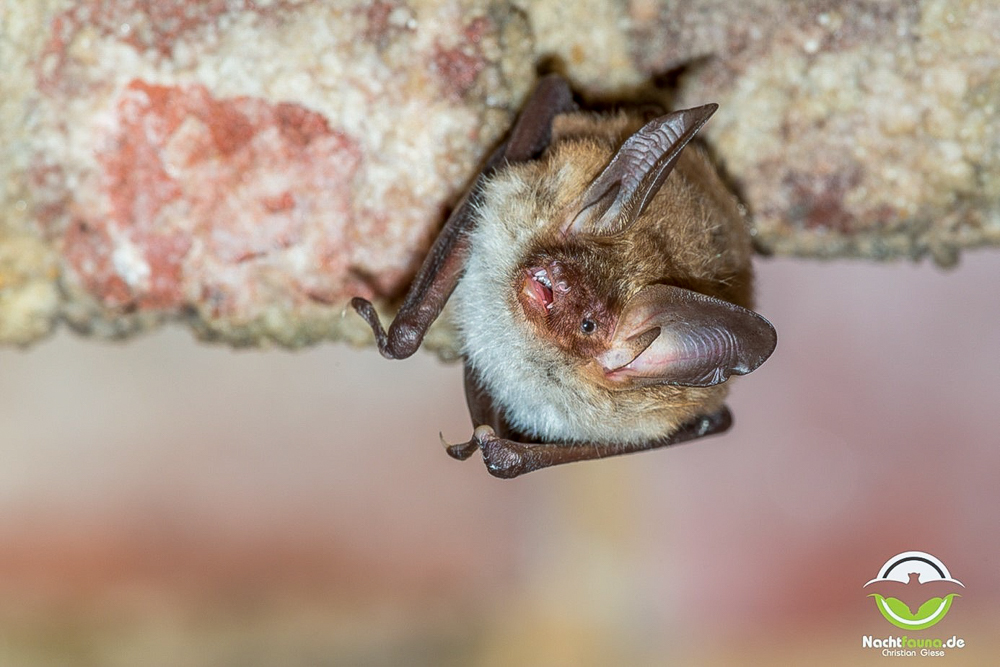Previous long-term research on individually marked wild bats by the research group, Applied Zoology and Nature Conservation at the Zoological Institute of the University of Greifswald, showed that larger female Bechstein's bats have a shorter life expectancy but reproduce at a faster rate, allowing them to maintain a relatively constant reproductive success compared to smaller females (Mundinger et al 2022). Using 25 years of long-term data revealed that warmer summers were leading to larger animals (Mundinger et al. 2021, 2023). In order to test whether roost temperature directly influences body growth, in their new study, the team heated the day roosts of several free-ranging colonies of Bechstein's bats during the growth phase of juveniles. By comparing the body size of bats raised in heated roosts versus those raised in unheated roosts, the researchers could show that there was indeed a direct effect of temperature on a bat’s growth.
Dr Carolin Mundinger, co-lead author of the study, explains: "We developed a mobile heating device that allowed us to maintain the temperature inside bat boxes between 30 – 35°C for the first eight weeks after bats were born. This range corresponds to the temperature at which bats minimize the energy costs of maintaining a constant body temperature, thus enabling continuous juvenile growth.”
The results were striking – on average, heated bats grew significantly larger. "Female bats of this species are usually about 5% larger than the males, but in our experiment, heated males reached a body size similar to that of unheated females," explains Prof. Gerald Kerth, who established the long-term study on Bechstein's bats 30 years ago.
What do these results mean for this strictly protected bat species in view of rising temperatures due to man-made climate change as well as the decline in insects that has been observed for years? Janis Wolf, the co-lead author of the study argues: "The faster life history of larger Bechstein's bats can only work if insect availability is favourable each year. If body size is directly influenced by temperature and insects continue to decline, warmer summers could have a long-term negative impact on the population of Bechstein's bats because larger bats may no longer find sufficient food for reproduction".
Original publication
Mundinger C., Wolf J.W., Gogarten J.F., Fierz M., Scheuerlein A., Kerth G. (2023). Artificially raised roost temperatures lead to larger body sizes in wild bats. Current Biology, 33. DOI: https://doi.org/10.1016/j.cub.2023.08.004.
Further information
- Webpage of the group Applied Zoology and Nature Conservation at the University of Greifswald: https://zoologie.uni-greifswald.de/en/organization/departments/applied-zoology-and-nature-conservation
- Mundinger C., Scheuerlein A., Kerth G. (2021). Long-term study shows that increasing body size in response to warmer summers is associated with a higher mortality risk in a long-lived bat species. Proceedings of the Royal Society B, 288: 20210508. DOI: https://doi.org/10.1098/rspb.2021.0508.
- Mundinger C., Fleischer T., Scheuerlein A., Kerth G. (2022). Global warming leads to larger bats with a faster life history pace in the long-lived Bechstein’s bat (Myotis bechsteinii). Communication Biology, 5: 682. DOI: https://doi.org/10.1038/s42003-022-03611-6.
- Mundinger C., van Schaik J., Scheuerlein A., Kerth G. (2023). Heat over heritability: Increasing body size in response to global warming is not stabilized by genetic effects in Bechstein's bats. Global Change Biology, 29: 4939–4948. DOI: https://doi.org/10.1111/gcb.16824.
The photo is available on request from pressestelleuni-greifswaldde and can be used for free for editorial purposes in combination with this media release. If published, the author of the image must be named.
Contact at the University of Greifswald
Prof. Dr. Gerald Kerth
Zoological Institute and Museum
Loitzer Straße 26
17489 Greifswald
Tel +49 (0)3834 420 4100
Fax +49 (0)3834 420 4252
gerald.kerthuni-greifswaldde
Group on X (previously Twitter): @BatResearch_HGW

